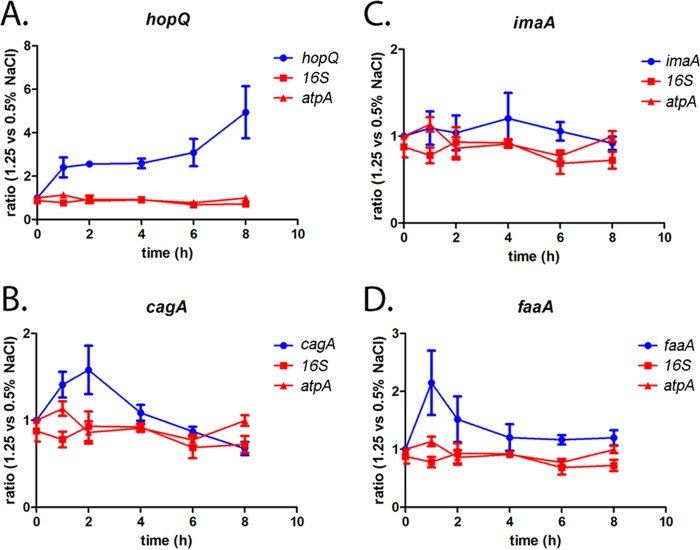FIG 4.
hopQ transcript levels are increased in response to high salt concentrations. Previous proteomic experiments (16, 19) detected differential abundance of CagA, HopQ, ImaA, and FaaA when bacteria grown under low-salt conditions or routine conditions were compared with bacteria grown in medium containing higher salt concentrations. H. pylori was cultured for the indicated times in BB-FBS-0.5% or BB-FBS-1.25% medium. Salt-dependent changes in the transcript levels of these genes were monitored using real-time RT-PCR. Transcript abundance was calculated using the ΔΔCT method, with each transcript level normalized to the abundance of the gyrB internal control. At each of the indicated time points, the normalized transcript levels for H. pylori grown in BB-FBS-1.25% were compared to the normalized transcript levels for H. pylori grown in BB-FBS-0.5% to calculate a ratio of transcript abundance. (A to D) Effect of increased salt concentrations on transcription of the indicated genes (hopQ, cagA, imaA, and faaA). The effects of high-salt conditions on expression of atpA and 16S rRNA were monitored as controls. Each panel depicts results obtained with RNA derived from four independent experiments, using H. pylori grown in either BB-FBS-0.5% or BB-FBS-1.25% medium. The mean and standard error of the mean are reported.

